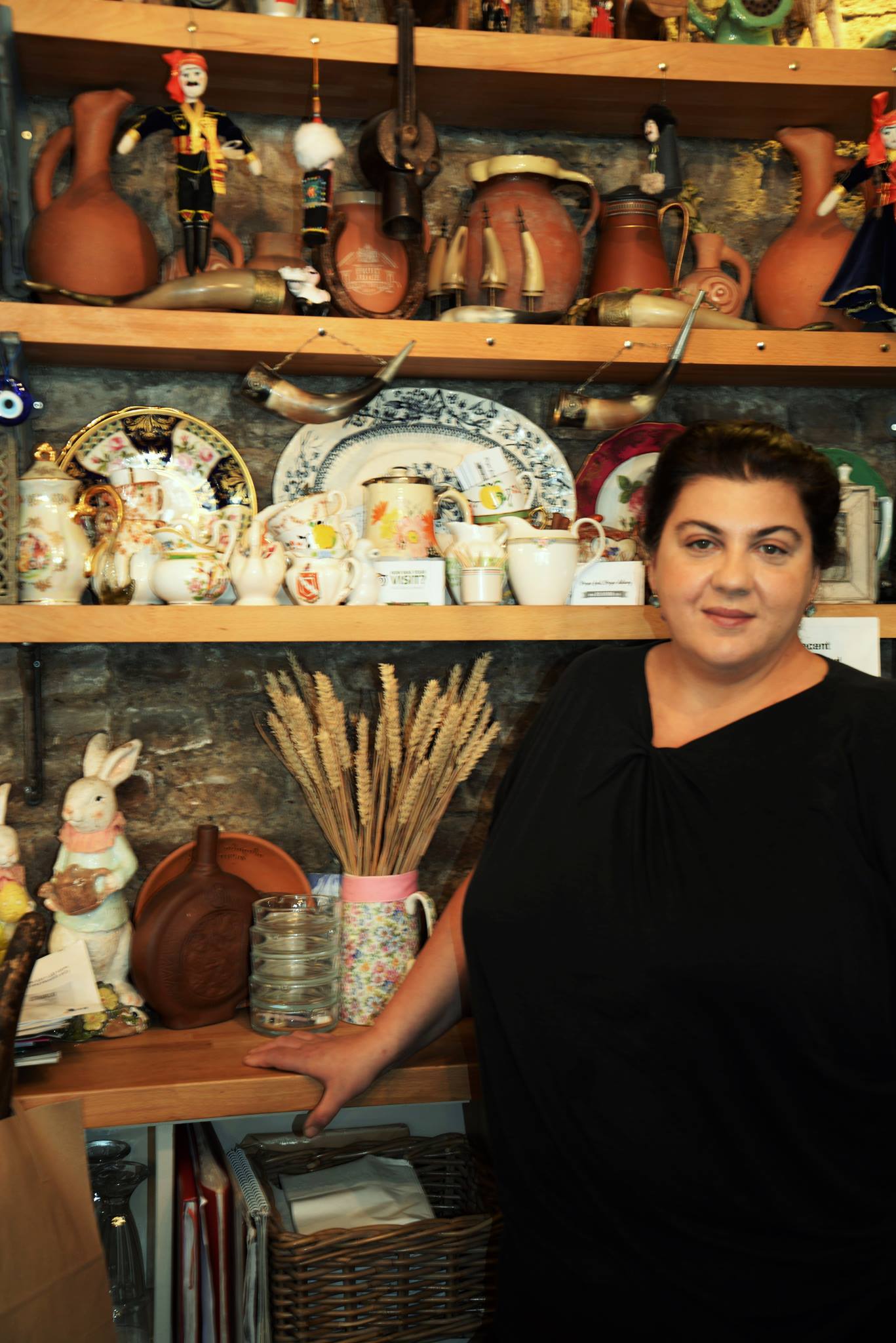Delving into London’s Georgian Restaurants
Georgian restaurants began to appear in London about ten years ago. Sandra Buchanan went to meet three Georgians who came to the UK in the early 2000s and decided to make a home, and ultimately a restaurant, in London.
So far, there are only six Georgian restaurants in London and the population of the city is 8.6 million – that’s only one for every 1.4 million people, which is definitely not enough. Of those 8.6 million not many are Georgians – maybe 15,000 or 20,000 and while they are the natural customers for these restaurants, native Londoners are finding out that they love Georgian food, too. Each restaurant has a different style and is located in a different part of London – but whether it’s a cosy café or a smart dining room, the same traditional dishes and wines are served.
National dishes are not always as good outside their native country, but Georgians living in London are enthusiastic about the flavors produced in London restaurants – just like home. Georgian spices are so distinguished they have to be imported from Georgia, but the herbs are common to Europe; sulguni cheese is not made in the UK, but it can be imported; a combination of soft Italian cheeses is subtle enough to make a very good khachapuri.
British taste buds love Georgian wine, too. The Georgian Wine Society has established itself in the last few years, importing directly from the wineries of Tbilvino, Marani and Bagrationi, and sales are growing.
Iberia (main photo)
The name of this restaurant seems entirely out of place to a Londoner – it makes Europeans think of Spain. But a quick look at Wikipedia tells us that in the 9th century there was a region in Georgia named the "Curopalatinate of Iberia”. Inside, the restaurant’s décor reflects a traditional Georgian style with simple white walls, dark furniture and wine bottles decorating the walls.
Lasha opened Iberia in 2009. Soon after completing his law studies in Tbilisi he came to London and enrolled on a course of UK law, but found the fees too expensive to continue. He wanted very much to have his own business, but why a restaurant? Because, he says, he couldn’t get the food he liked. Longing for some real Georgian cooking, he found a property in an ordinary street in north London and Iberia was born. Soon the young, the knowledgeable and the curious from two blocks away in fashionable Islington came to eat at Iberia.
A Georgian on holiday would not be disappointed with the menu: four kinds of khachapuri, badrijani, kombosto and cicaka, followed by (for example) satsivi, kalmakhi or khinkali. Everything is delicious, but what people in Georgia will want to know is – how authentic is the cooking? Lasha says that he imports sulguni cheese, all the spices and some of the herbs from Georgia to achieve the true flavours. Other specialities like dried barberries and pomegranate seeds are available in the UK.
Mimino

This smart dining room was opened in 2006 by a native of Adjara. George lived in London for six years before he hit on the idea of starting a restaurant. Soaking in a west-London sauna with Russian friends was a treasured weekly event but – where to eat afterwards? The only Georgian restaurant was on the other side of the city. So, with a course of UK business education behind him, George found a suitable property in up-market Kensington and created Mimino.
In the early days, Mimino was a magnet for Russians, who more or less filled the place. But as more Russian restaurants opened in London, their number dwindled, and now Londoners and London’s cosmopolitan population, including Georgians, fill around half the tables. The house specialities are dumplings and shashlik. The meat is marinated in Svanuri salt, imported from Georgia, before it is cooked over charcoal. Spices are imported from Georgia, too, but not the essential ingredient for khachapuri – sulguni cheese is imported from a specialist company in Germany.
George makes a special feature of the wine table: at the front of the restaurant is a table with sample bottles, uncorked so customers can taste as many as they like before choosing from the wineries of Marani or Tbilvino. And at the back of the restaurant, lending another kind of emphasis to the spirit of Georgia, are some gorgeous paintings by Georgian artist Mamuka Mikeladze.
The Georgian

Nino is an artist who loves cooking. She graduated art school in Tbilisi in 2000, but after a couple of years with poor employment prospects, left for London to study English, and in 2009 she opened The Georgian café-restaurant. She loved London from the beginning, especially the art galleries, and says she felt so comfortable and so little like a guest, that staying was an easy decision. Besides which, she met and married an Englishman.
Driven by the desire to introduce the art of Georgian cuisine to Londoners, Nino hunted down a small property, previously a sandwich bar, close to Clapham Common in south London. The café opens at 8am to serve Georgian breakfasts with aladzki and khachoiani proving very popular on the English palette, lunches that include Georgian salads, blinis and pelmenis, and stays open till 11pm for chakhokhpili, chaqapuli, kotnis lobio and other familiar main courses. Nino does all the cooking herself, including cakes, which she makes fresh every day. While no cake is exclusively Georgian (cake is not bound by national borders), traditional honey cake with walnuts is a big favourite.
For the interior, Nino has reproduced a feature familiar to a lot of Georgian households – a clutter of pretty china that she brought with her from home. Around the walls hang photographs from the early 20th century depicting uniformed soldiers and officials, street vendors and mountain villagers in old Georgia.
By Sandra Buchanan
Photos by Sandra Buchanan









